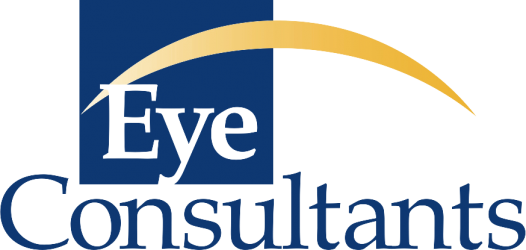Our Procedures
CustomVue iLASIK
Who Makes a Good LASIK Candidate?
What are CustomVue LASIK & Wavefront Technology?”
How does IntraLase laser technology work & how does it benefit me?
How is IntraLASIK different from iLASIK?
How is conventional LASIK different from CustomVue Wavefront-guided LASIK?
Why is iLASIK to best choice for me?
Who Makes a Good LASIK Candidate?
An ideal LASIK candidate is someone who is over 18 years old and has healthy corneas, with a stable prescription for at least two years. Candidates should have a good understanding of the risks and benefits of LASIK. The best way to find out if you are a good candidate is to schedule a free screening or a comprehensive pre-operative exam. Our LASIK/PRK coordinator will be happy to schedule any appointments or simply answer any questions you may have; contact us at (509) 484-5710, toll-free at (800)-522-5710 or email us at info@eyeconsultantsnw.com.
What are CustomVue LASIK & Wavefront Technology?
CustomVue LASIK, also known as Wavefront-guided LASIK, is a more technologically advanced LASIK procedure that allows doctors to create an individualized laser correction specific to your eye. CustomVue LASIK is also referred to as the “fingerprint of your vision,” because, just like a fingerprint, each person’s surgical treatment is 100% unique to their eyes. This unique mapping of your eye is created by the Wavescan machine, which is derived from Wavefront Technology.
Wavefront Technology was originally developed by NASA and used in their high-powered telescope lenses to reduce distortion and improve the overall visual clarity of images being viewed in space. This same concept that was applied to high-powered telescope lenses has now been applied to our corneal lens in the form of the Wavescan machine.
The Wavescan machine maps how bundled rays of light enter and travel through the eye. The resulting Wavescan map illustrates what types of irregularities are present, such as higher order aberrations, and produces measurements that are 25 TIMES more precise than glasses, contact lenses, or conventional LASIK can measure!
Due to the Wavescans ability to take such refined measurements, patients are not only able to improve how much they can see (visual acuity measured by the standard 20/20 eye chart), but also how well they can see, in terms of contrast sensitivity and ability to see fine detail. Patients who choose CustomVue LASIK with Wavefront-guided mapping can actually achieve a crisper, clearer vision than patients who opted for conventional LASIK, glasses, or contact lenses! This crisper, clearer vision is due in part to the fact that Wavefront-guided CustomVue corrections are measured in 1 / 100 diopter power, while conventional LASIK can only measure in diopter power. Additionally, the CustomVue procedure is designed to diminish night vision problems.
In an FDA clinical study done on patients one year after their CustomVue LASIK procedure
- 100% of participants could pass a driving test
- 98% of participants could see 20/20 or better
- 70% of participants could see better than 20/20
IntraLASIK is the general term for a LASIK procedure utilizing the IntraLase femtosecond laser to create the corneal flap, as opposed to a microkeratome (razor blade).
How does IntraLase laser technology work & how does it benefit me?
With IntraLase laser technology, tiny pulses of laser light (a quadrillionth of a second each) pass harmlessly through the outer portion of your cornea and create a uniform layer of microscopic bubbles just beneath the surface of your eye. Because your eye is made up in layers, like an onion, these bubbles gently expand and are able to separate two layers of tissue; so there is no cutting of the cornea involved. The surgeon then is able to lift the flap.
LASIK is extremely safe, but if complications do occur, the microkeratome is frequently the cause. With the use of the IntraLase femtosecond laser, we are able to offer the highest level of safety in flap creation. In addition to enhanced safety, IntraLase technology now allows the surgeon to fully customize your flap to the dimensions of your eye. Everything from the circumference of your flap to the angle of its edges can be precisely determined. The angle of the flap plays a pivotal role in the enhanced safety of patients post-operatively. By increasing the flap angle to 90° or higher makes the flap at least 3 times stronger than a microkeratome flap. When the flap is returned to its original position it fits snugly back into place, like a manhole cover or a cork in a wine bottle.
Other benefits of the IntraLase method over the microkeratome are better visual outcomes, greater predictability and accuracy, fewer retreatments, reduced dry eye, and an increased number of potential candidates for the procedure. The ability of the surgeon to tailor the dimensions of your eye is important because everyone’s eyes are shaped a little differently. Having a corneal flap that is individualized to the patient contributes to excellent post-operative vision.
iLASIK is the term describing the specific combination of the IntraLase laser flap method with a VISX CustomVue Wavefront-guided corneal reshaping treatment. iLASIK is a fully customized LASIK procedure that is 100% blade-free. Simply put, iLASIK is the culmination of all of the most advanced technologies for vision correction rolled into one. The “i” in iLASIK stands for innovation and individualization.
How is IntraLASIK different from iLASIK?
Technically, IntraLASIK can reference either conventional IntraLASIK or a “CustomVue IntraLASIK” procedure. However, the term iLASIK has generally replaced the term “CustomVue IntraLASIK.” That being said, both IntraLASIK and iLASIK are 100% all-laser procedures. The difference lies in the type of corneal measurement & reshaping that is performed: conventional or CustomVue Wavefront-guided.
How is conventional LASIK different from CustomVue Wavefront-guided LASIK?
A conventional procedure is considered the traditional version. With conventional treatments, we take your most current glasses prescription and the VISX Star S4-IR excimer laser creates that prescription on your cornea by vaporizing small amounts of tissue to reshape the corneal surface. A conventional procedure is a blanket treatment over the surface of the cornea, with no customization. Patients will only be correctable to 20/20 if they were also correctable to 20/20 in their glasses. Likewise, if patients are only correctable to 20/30 in their glasses they will only be correctable to 20/30 with a conventional treatment.
Conversely, a CustomVue Wavefront-guided procedure is considered the gold standard of LASIK treatments. Using Wavefront technology, the Wavescan machine maps out a 3D image of your eye from over 240 points of light, pinpointing areas of your eye that need a little more or a little less attention from the laser. This 3D mapping gives us measurements that are 25 times more precise than glasses, contacts, and conventional LASIK can measure and correct. Treatments based on these extremely refined measurements generally produce a vision that is crisper and clearer than a conventional procedure. With CustomVue Wavefront-guided procedures, patients have the best chance of seeing even better than what they could see in their glasses or contacts. It is not uncommon for CustomVue Wavefront-guided patients to see 20/15 after surgery.
Why is iLASIK to best choice for me?
iLASIK is the first vision correction procedure of its kind to be completely personalized to your eyes unique features — from the customized Wavefront mapping, which is 25 times more precise than conventional LASIK & IntraLASIK methods, to the unrivaled precision of the IntraLase laser flap method, which results in flaps that are 3 times stronger than flaps cut with the microkeratome (razor blade).
Most importantly, the iLASIK procedure offers an unsurpassed safety profile as a result of the elimination of the microkeratome, as was used in earlier versions of LASIK. The technological advances and improved safety of the iLASIK procedure spurred the U.S. Military to conclude that iLASIK was the best procedure for their fighter pilots and Navy Seals; even NASA has elected to exclusively perform iLASIK on their astronauts.

